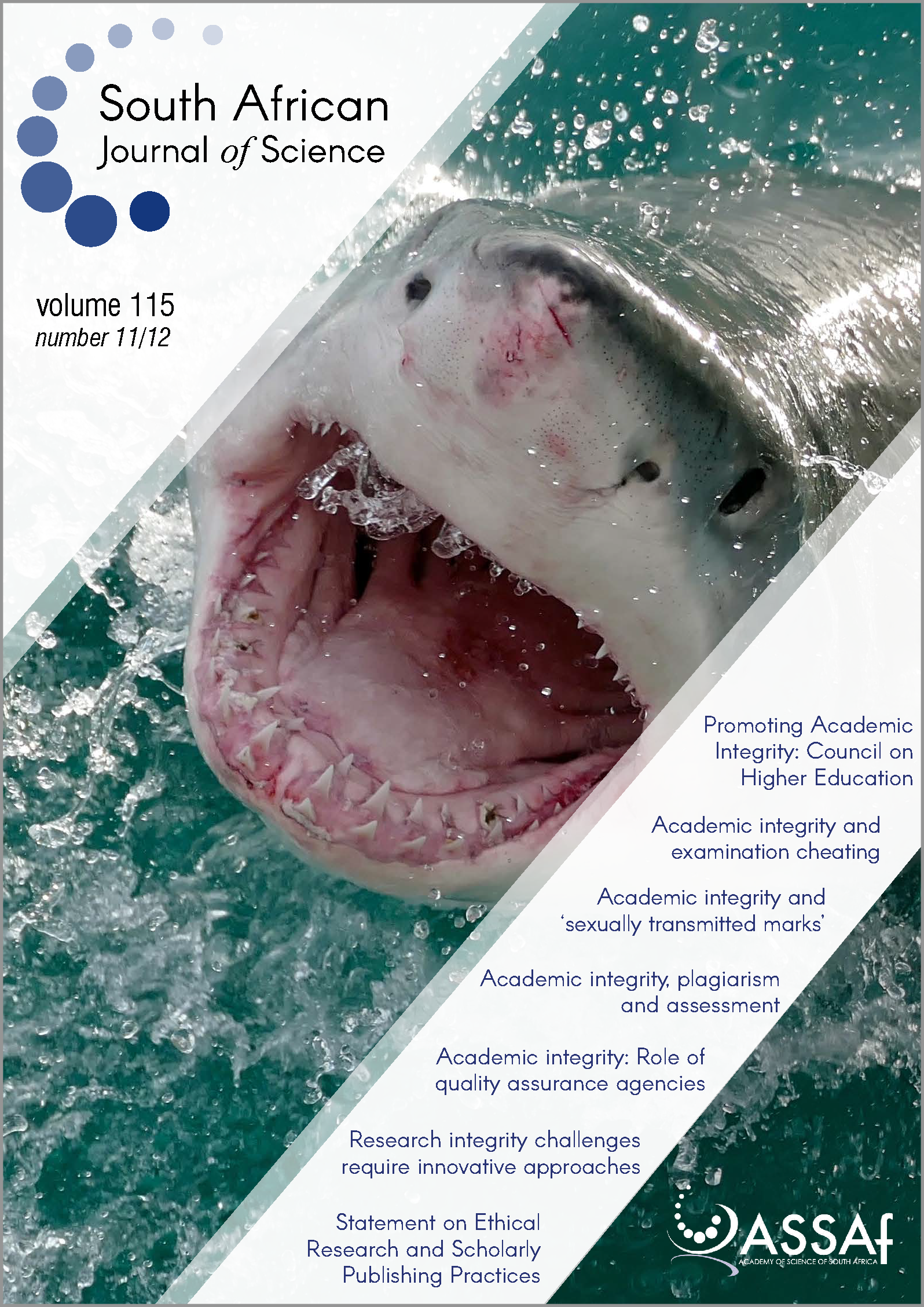Identification of lactic acid bacteria and determination of selected biochemical properties in emasi and emahewu
DOI:
https://doi.org/10.17159/sajs.2019/6362Keywords:
microbial, biochemical, Swazi traditional fermented foods, identity, fermenting bacteriaAbstract
Fermented foods are produced at household level for personal consumption in the Kingdom of Eswatini (formerly Swaziland). In this study, we determined the biochemical aspects, enumeration, isolation and identification of lactic acid bacteria (LAB) in emasi and emahewu – two Swazi traditional fermented foods. Emasi had an average pH of 4.68, titratable acidity of 0.9% and LAB count of 8.25 log CFU/mL. Emahewu had a pH of 3.62, titratable acidity of 0.4% and LAB count of 8.10 log CFU/mL. The LAB counts were consistent with observations for similar African fermented foods. The LAB from emasi and emahewu were identified through Gram stain, catalase reaction, sugar assimilation tests using API 50 CH test strips, and sequencing of 16S rDNA. It was found (from nine isolates) that Lactococcus lactis subsp. lactis and Leuconostoc mesenteroides were the common strains in emasi. Lactobacillus plantarum, Lactobacillus paracasei ssp. paracasei and Lactobacillus brevis were also detected. Lb. plantarum, L. mesenteroides ssp. mesenteroides, Lactobacillus fermentum, Lb. brevis, Wessella confusa, Lactobacillus acidophilus and Lb. lactis were found in emahewu (from 16 isolates). This finding was consistent with LAB found in a South African fermented milk, in which common genera were Leuconostoc, Lactococcus and Lactobacillus. Strains found in emahewu – mainly Lactobacillus spp., Weissella and Enterococcus – are similar to those found in ting, a South African fermented non-alcoholic beverage.
Significance:
- This study provides the first documentation of microbial and biochemical aspects of the Swazi traditional fermented foods, emasi and emahewu.
Published
Issue
Section
License

All articles are published under a Creative Commons Attribution 4.0 International Licence
Copyright is retained by the authors. Readers are welcome to reproduce, share and adapt the content without permission provided the source is attributed.
Disclaimer: The publisher and editors accept no responsibility for statements made by the authors
How to Cite
- Abstract 1401
- PDF 772
- EPUB 187
- XML 382












.png)